Williamson Gallery director reflects on his many moons—and exhibits—at ArtCenter
At the end of a hallway at Hillside Campus, alumnus Stephen Nowlin (MFA 78 Art) sits in his office, a floor below ArtCenter’s 4,600-square-foot Alyce de Roulet Williamson Gallery, where he’s been the director since it opened in 1992.
To his left, a giant print of Irving Penn’s 1975 black-and-white photo Mud Glove leans against a wall. To his right, a gold-framed print of an orange painting by Josef Albers hangs beneath shelves of art, design and science books. Nowlin smiles as a group of curious prospective students files past his window.
“What I do is a form of teaching—giving students points of view different than what they get in the classroom,” says Nowlin, who has curated almost 100 exhibitions at the gallery, from 1993’s Art As Activist to the current Moons. “People who've graduated visit years later and can recall an exhibit that impacted them.”
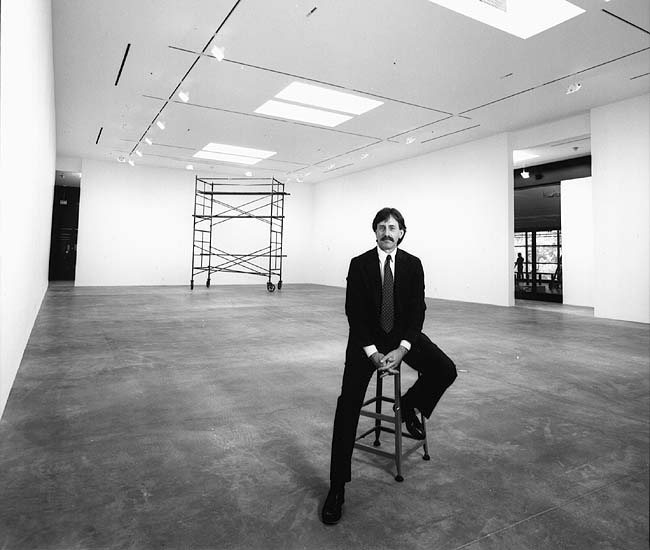
Curating science and art shows, for me, is a form of art practice
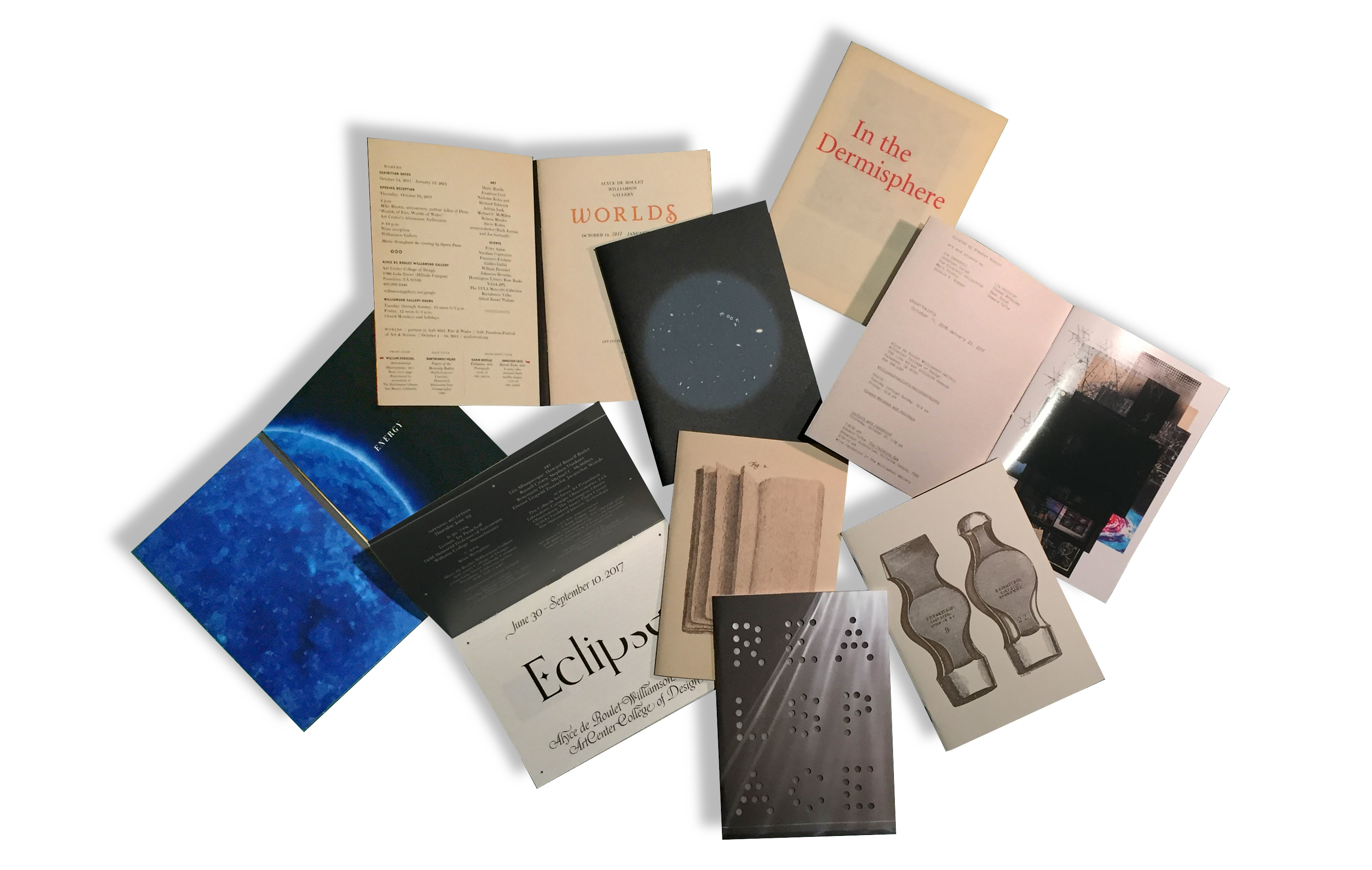
And for 40 years, Nowlin has had an impact on ArtCenter. He started as a Graduate Art student in the late 1970s, with long hair and a beard. After graduating, he taught at the College for 10 years while also helping organize exhibitions before the Williamson Gallery was even built. As gallery director, he’s nurtured collaborations with a wide range of institutions, including the California Institute of Technology, Jet Propulsion Laboratory and the Huntington Library.
“Curating science and art shows, for me, is a form of art practice,” Nowlin says. “When I collaborate with artists, I’m like a film director working with an ensemble cast rather than an academic archivist.”
For Nowlin, creativity has permeated his life. The son of two musicians, he grew up in South Pasadena loving to draw and coveting technology. He cites his dad’s inventive spirit as an early influence.
Before attending ArtCenter for graduate school, Nowlin made experimental art and worked at Caltech in an art and science program—he assisted motion graphics pioneer John Whitney on a computer-based film. At ArtCenter, Nowlin was influenced by painter Dorothea Rockburne and conceptual artist Mel Bochner. His thesis project, Invariant Transformations, featured geometric objects covered in black paint. “Being a graduate student at ArtCenter was the best learning experience I've ever had,” says Nowlin.
Today, the Williamson Gallery mounts two exhibitions a year, each of which take two years to develop, from the spark of a theme to its public opening. Nowlin laughs when asked to list his favorite Williamson exhibitions, noting, “My favorites always include the last show I did or the one that just opened.”
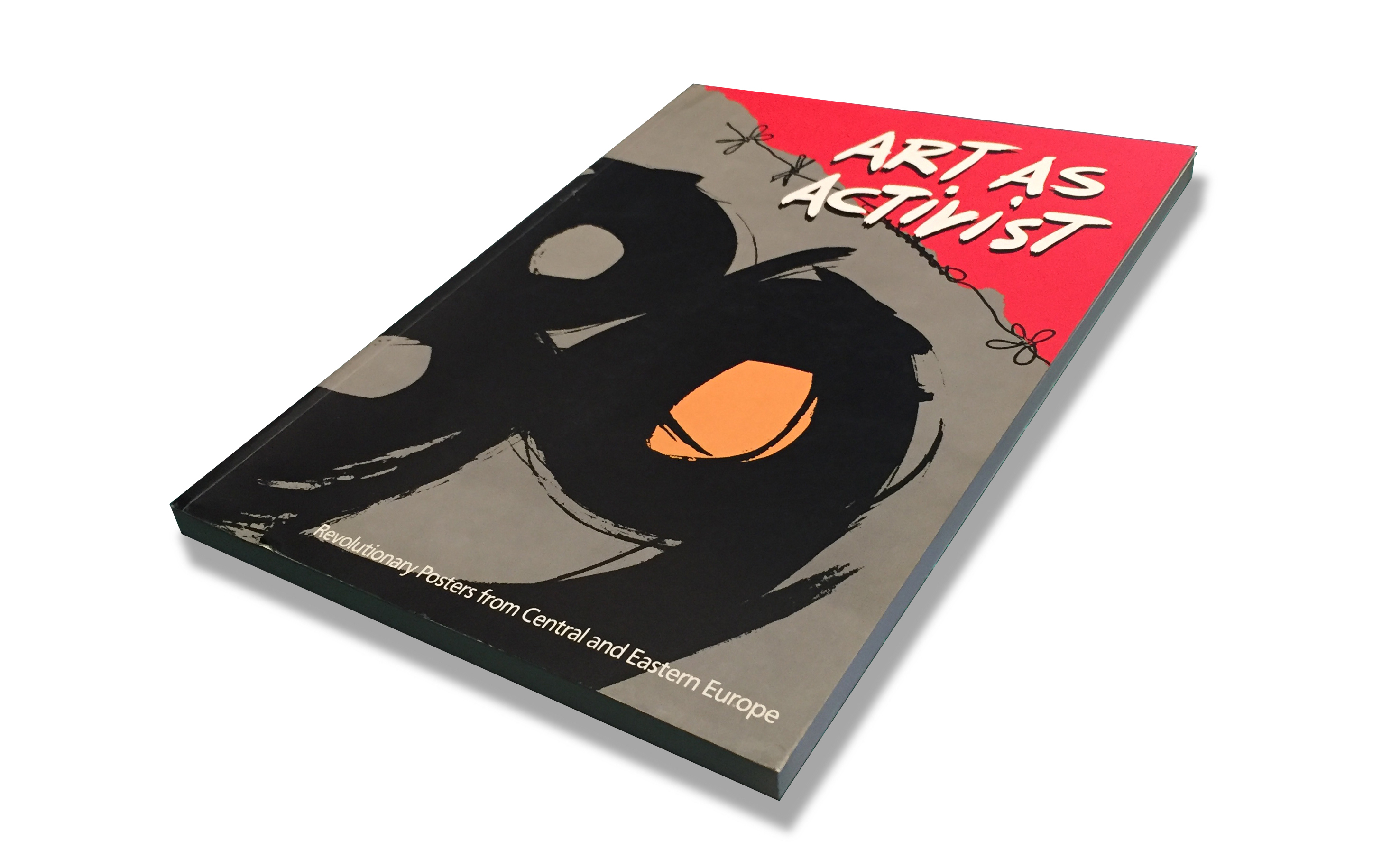
He considers 1993’s Art As Activist a launching point for the gallery. Opening one year after the L.A. Riots, the traveling exhibition included stark political posters from Central and Eastern Europe, propaganda posters from mainland China and posters on American identity and colonialism 500 years after Columbus.
“The exhibit was about declaring that the gallery was not just about showing the products of the mainstream, but also about making statements, being politically incisive and engaging with issues at the time,” says Nowlin.
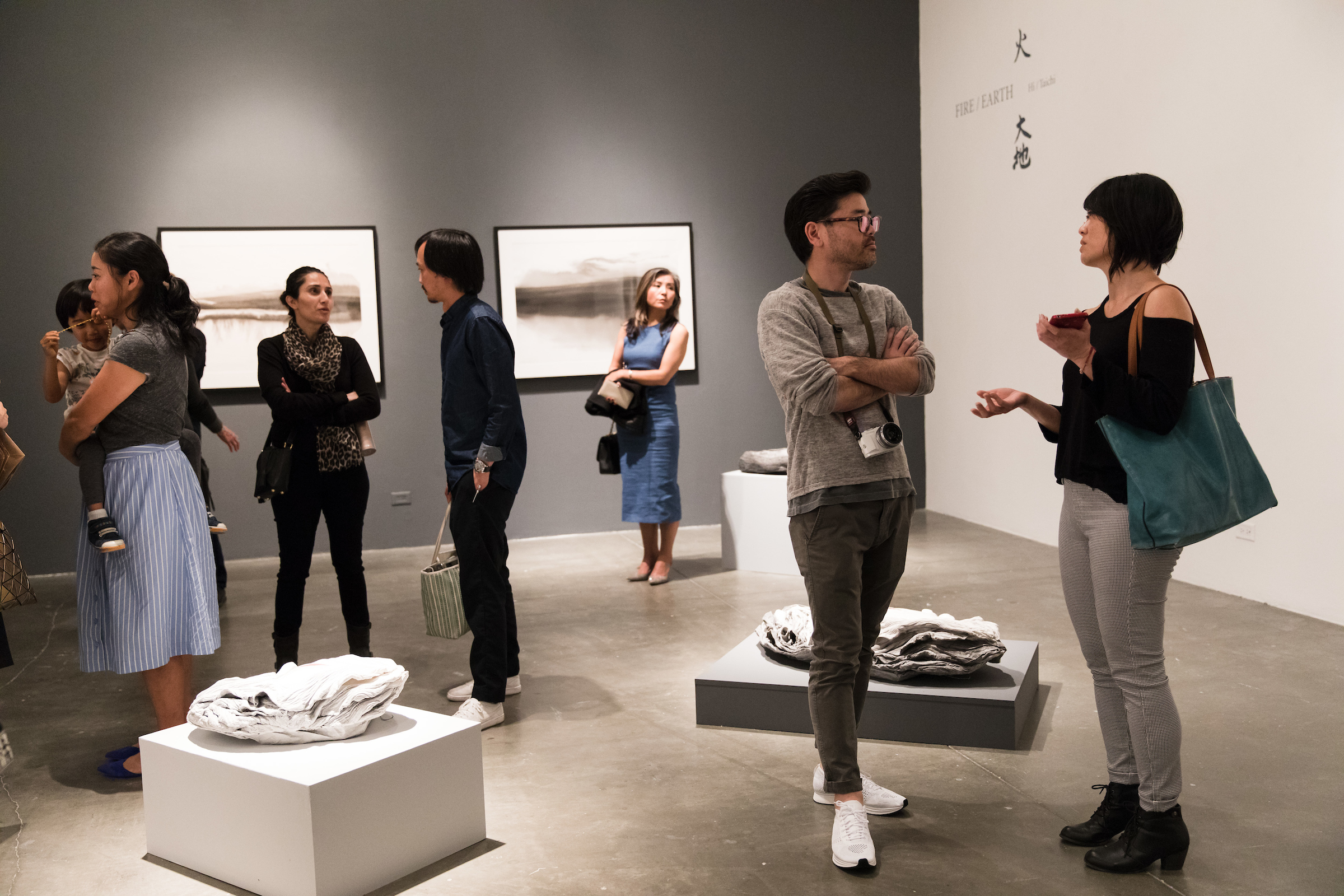
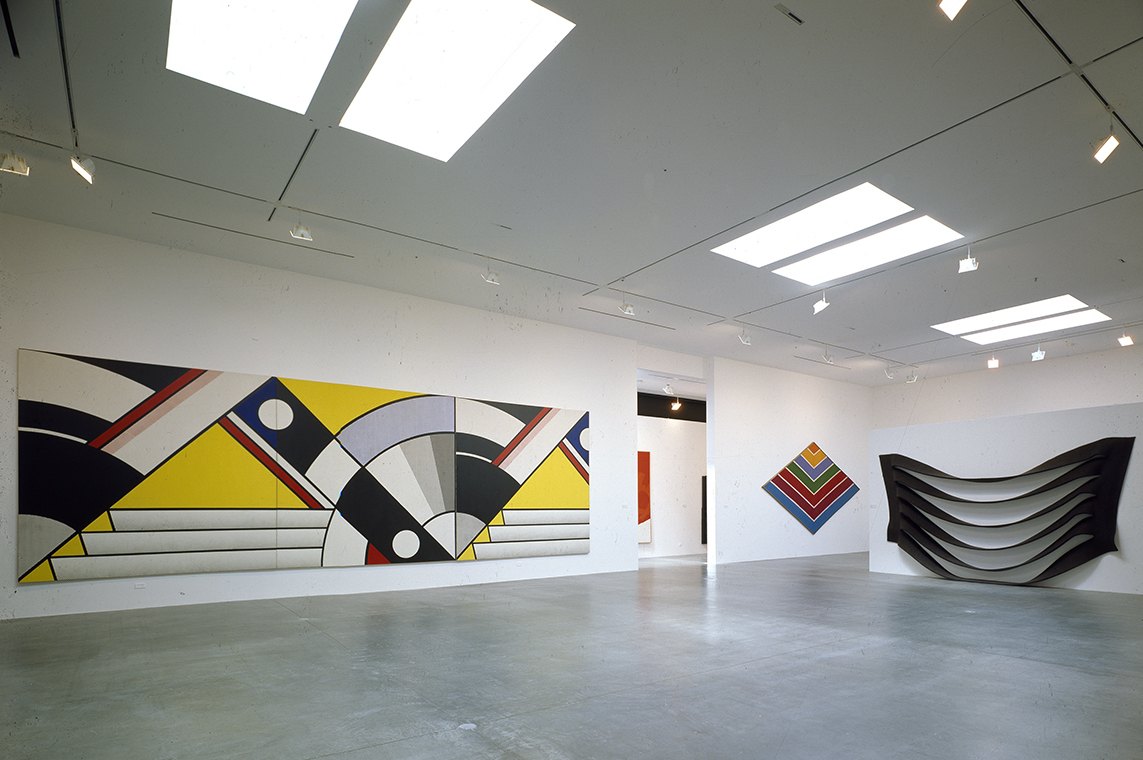
A collaboration between five Pasadena organizations, 1999’s Radical Past explored Pasadena as a hub for exhibiting avant-garde art from the 1960s through the ‘80s and featured an intricate piece by abstract painter Agnes Martin and a monumental sculpture by Louise Nevelson.
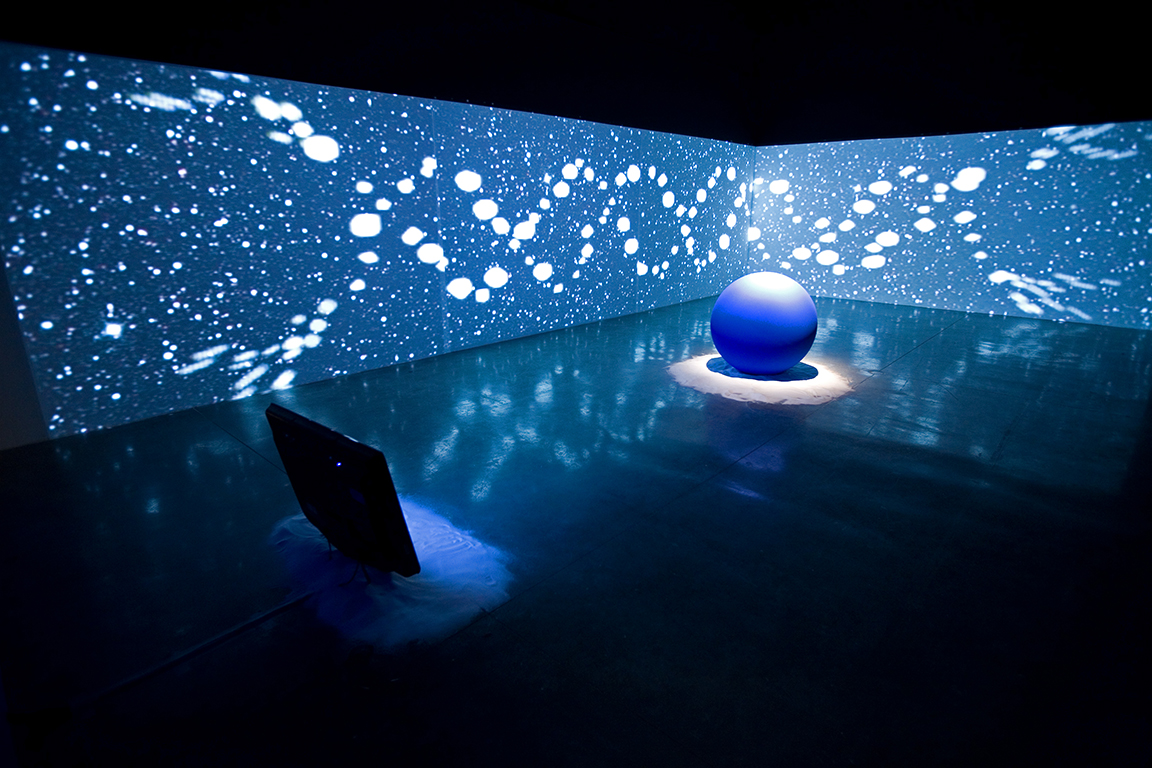
Art and digital technology exhibition Digital Mediations in 1995 and the 2003 show Neuro, a pairing between ArtCenter and Caltech, propelled the Williamson’s collaborative history of art and science shows, which include Observe (2008), Worlds (2011), and Eclipse (2017) which was timed to the Great American Eclipse.
Nowlin points to 2016’s Uncertainty, inspired by its namesake scientific principle, as a great example of this intersection. It included nine installations pondering the edges of knowledge and perception through paintings, artifacts, data visualizations and more. The Einstein Collective, a group of physicists and artists, created the animated swirling installation Black (W)hole.
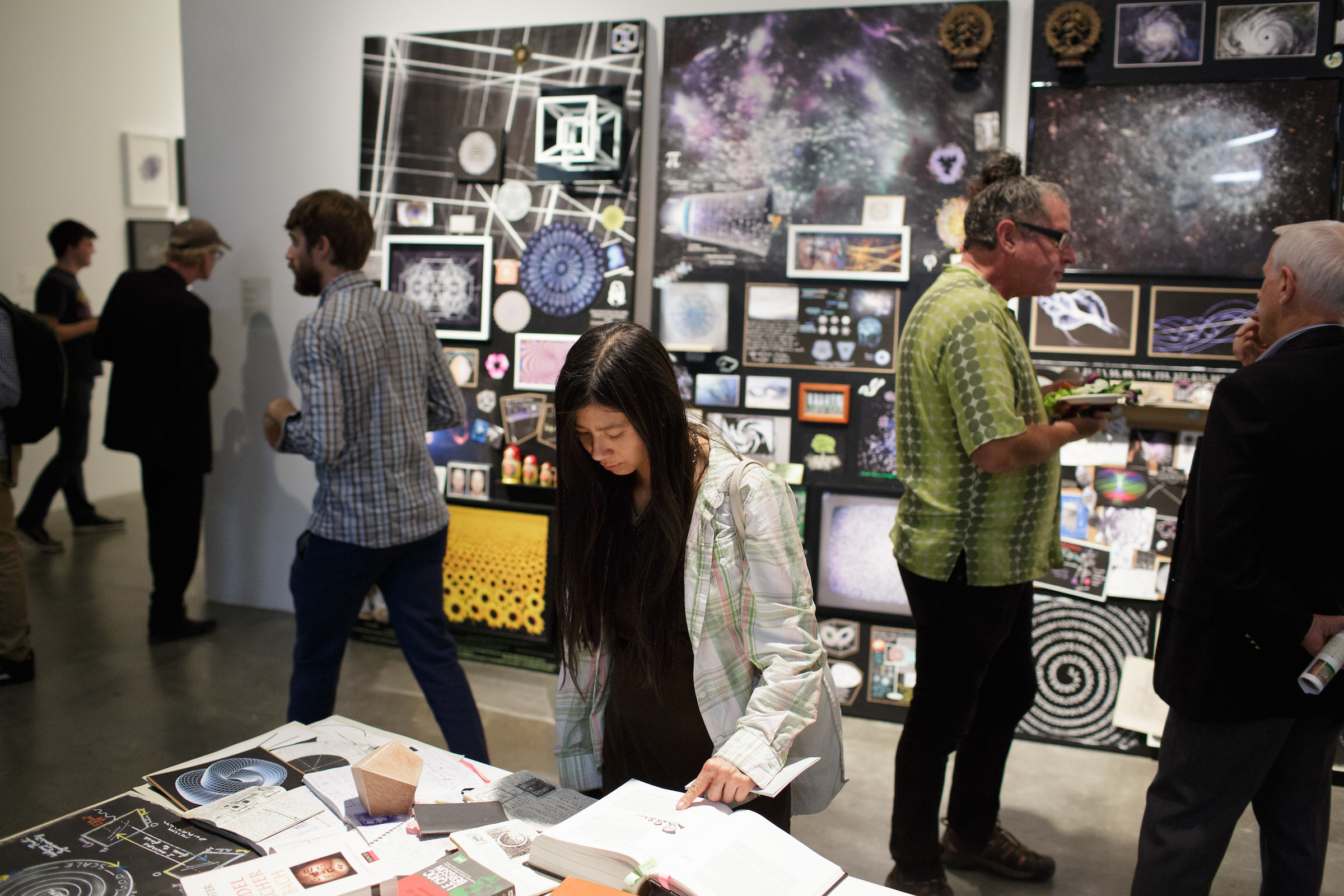
“In the last 15 years, the subject of art and science has exploded around the world,” says Nowlin. “The Williamson Gallery’s art-science series has been right in the middle of that movement, and recognized nationally and beyond.”
As for the future, the Fall 2018 opening of South Campus’s Mullin Gallery, plus exhibitions at other ArtCenter spaces such as the Hoffmitz Milken Center for Typography (HMCT), and an exploratory partnership with downtown L.A.’s Main Museum, mark a broadened approach.
“There’s a willingness on the part of the College to have diversified programmable exhibition spaces beyond the Williamson Gallery, and there’s an energy to that,” says Nowlin. “It will be exciting to see what the future holds.”






